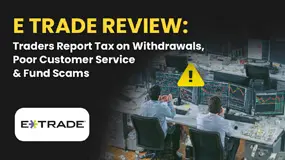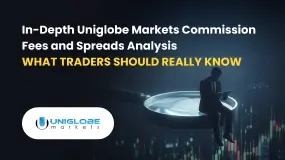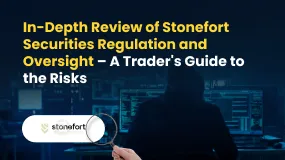简体中文
繁體中文
English
Pусский
日本語
ภาษาไทย
Tiếng Việt
Bahasa Indonesia
Español
हिन्दी
Filippiiniläinen
Français
Deutsch
Português
Türkçe
한국어
العربية
Deepfake Deception: New Face of Financial Scams in Forex and Crypto
Abstract:In the ever-evolving landscape of financial scams, fraudsters are now leveraging cutting-edge artificial intelligence (AI) to deceive unsuspecting victims. Deepfake technology, which manipulates audio and video to create hyper-realistic but entirely fabricated content, has become a powerful tool for scammers, particularly in the forex and cryptocurrency markets.

In the ever-evolving landscape of financial scams, fraudsters are now leveraging cutting-edge artificial intelligence (AI) to deceive unsuspecting victims. Deepfake technology, which manipulates audio and video to create hyper-realistic but entirely fabricated content, has become a powerful tool for scammers, particularly in the forex and cryptocurrency markets. These scams often involve impersonating well-known figures, creating fake endorsements, or even fabricating entire investment webinars to lure traders into fraudulent schemes.

Deepfake scams in the financial industry typically follow a well-crafted script. Scammers use AI-generated videos to impersonate reputable figures—such as CEOs of brokerage firms, famous traders, or financial analysts—to endorse fraudulent investment opportunities. These manipulated videos are often distributed through social media platforms, WhatsApp groups, or even directly via email campaigns.
One common tactic involves deepfake videos of financial influencers or industry leaders “promoting” a trading platform with promises of guaranteed high returns. Some fraudsters go as far as staging live video calls, where victims believe they are interacting with a real person, when in fact, it is an AI-generated deepfake controlled by the scammer. This level of deception adds a layer of credibility that traditional scams could never achieve, making it increasingly difficult for traders to differentiate reality from fiction.
Recognising deepfake scams requires vigilance and an understanding of the subtle inconsistencies that AI-generated content often exhibits. One of the most common red flags is unnatural facial movements. Deepfake videos may struggle to replicate natural eye movements, blinking patterns, or lip synchronisation when speaking. If something about the facial expressions or the way a person moves appears slightly off, it is worth investigating further.
The voice in a deepfake video can also provide clues. While AI-generated voices have improved significantly, they often lack natural intonations or may sound slightly robotic. In some cases, the tone may fluctuate awkwardly, or certain words may be pronounced in an unnatural way. Comparing the voice in a suspected deepfake with known recordings of the person can help reveal inconsistencies.
Another telltale sign is pixelation and blurring, especially around the edges of a persons face, which is common in AI-generated videos. These distortions become more apparent when the subject moves quickly or turns their head. If a video appears slightly off in quality, particularly in high-definition formats, it could indicate manipulation.
Deepfake scams often lure victims with offers that seem too good to be true. Any investment promising guaranteed profits with little to no risk should immediately raise red flags, regardless of how convincing the presenter appears. No legitimate financial institution can ensure risk-free returns, and any claim to the contrary is likely fraudulent.
Finally, verifying information from official sources is crucial. If a well-known figure is seemingly endorsing an investment opportunity, checking their official website or social media profiles can help confirm whether the endorsement is legitimate. Scammers frequently hijack the likeness of celebrities and financial experts without their knowledge, so relying on trusted sources for confirmation is essential.
To avoid falling victim to deepfake scams, always double-check identities before engaging with any financial offer. Conducting independent research on the company or individual making the claim can help uncover inconsistencies or past fraudulent activity. Official financial regulatory websites are useful sources for verifying whether a broker or investment platform is licensed.
It is also important to be wary of high-pressure tactics. Scammers often create a sense of urgency, urging victims to act quickly before an “exclusive opportunity” disappears. This strategy is designed to prevent critical thinking and force individuals into making impulsive decisions. Legitimate financial institutions do not rush investors into making commitments.
If a video or image seems suspicious, using reverse image and video search tools can help determine if it has been altered or used elsewhere. Scammers frequently recycle the same deepfake materials across multiple fraud schemes, so searching for prior instances of the same footage can expose the deception.
Strengthening online security is another crucial step. Enabling multi-factor authentication (MFA) on financial accounts adds an extra layer of protection against identity fraud. If scammers obtain personal details through deepfake scams, they may attempt to access victims' financial accounts, making additional security measures essential.
Before making any investment decision, consulting a licensed financial professional is always advisable. Relying on regulated experts rather than social media promotions or online videos ensures that investment choices are based on sound financial advice rather than fraudulent schemes.
As AI technology continues to advance, deepfake scams will only become more sophisticated. While governments and financial institutions are actively developing detection tools, awareness remains the strongest defence. By staying informed and scrutinising online financial offers carefully, traders can protect themselves from falling victim to these AI-driven frauds.
In an era where seeing is no longer believing, scepticism is no longer just an option—it is a necessity.

Disclaimer:
The views in this article only represent the author's personal views, and do not constitute investment advice on this platform. This platform does not guarantee the accuracy, completeness and timeliness of the information in the article, and will not be liable for any loss caused by the use of or reliance on the information in the article.
Read more

E TRADE Review: Traders Report Tax on Withdrawals, Poor Customer Service & Fund Scams
Has your E Trade forex trading account been charged a withholding tax fee? Did your account get blocked because of multiple deposits? Did you have to constantly call the officials to unblock your account? Failed to open a premium savings account despite submitting multiple documents? Is fund transfer too much of a hassle at E Trade? Did you find the E Trade customer support service not helpful? In this E Trade review article, we have shared certain complaints. Take a look!

mBank Exposed: Top Reasons Why Customers are Giving Thumbs Down to This Bank
Do you find mBank services too slow or unresponsive? Do you find your account getting blocked? Failing to access your account online due to several systemic glitches? Can’t perform the transactions on the mBank app? Do you also witness inappropriate stop-level trade execution by the financial services provider? You are not alone! Frustrated by these unfortunate circumstances, many of its clients have shared negative mBank reviews online. In this article, we have shared some of the reviews. Read on!

In-Depth Uniglobe Markets Commission Fees and Spreads Analysis – What Traders Should Really Know
For experienced traders, the cost of execution is a critical factor in broker selection. Low spreads, fair commissions, and transparent pricing can be the difference between a profitable and a losing strategy over the long term. This has led many to scrutinize the offerings of brokers like Uniglobe Markets, which presents a tiered account structure promising competitive conditions. However, a professional evaluation demands more than a surface-level look at marketing claims. It requires a deep, data-driven analysis of the real trading costs, set against the backdrop of the broker's operational integrity and safety. This comprehensive Uniglobe Markets commission fees and spreads analysis will deconstruct the broker's pricing model, examining its account types, typical spreads, commission policies, and potential ancillary costs. Using data primarily sourced from the global broker inquiry platform WikiFX, we will provide a clear-eyed view of the Uniglobe Markets spreads commissions prici

In-Depth Review of Stonefort Securities Regulation and Oversight – A Trader's Guide to the Risks
For experienced traders, the process of selecting a new broker transcends a simple comparison of spreads and leverage. It is a meticulous due diligence exercise where the integrity of the broker's regulatory framework is paramount. Stonefort Securities, a relatively new entrant in the crowded brokerage space, presents a complex and often contradictory profile. On one hand, it boasts a modern MT5 platform and a stream of positive user testimonials. On the other hand, it is shadowed by severe regulatory warnings that question the very foundation of its operations. This in-depth review focuses on the core issue for any long-term trader: Stonefort Securities regulation and oversight. We will dissect the broker's corporate structure, scrutinize its licensing claims, and analyze what the data implies for trader protection and fund security. For traders evaluating whether Stonefort Securities is a trustworthy partner, understanding these details is not just important—it is essential.
WikiFX Broker
Latest News
WikiFX's New Evaluation of ATM Capital LTD: Does its License Protect the Arab Investor?
How a Fake Moomoo Ad Led to the “New Dream Voyage 5” Scam
Is Axi Legit? A Data-Driven Analysis of Its Regulatory Standing and Trader Feedback
Trive Investigation: High Score, Hidden Risk - The Profit Paradox
In-Depth Uniglobe Markets Commission Fees and Spreads Analysis – What Traders Should Really Know
FXPesa Review: Are Traders Facing High Slippage, Fund Losses & Withdrawal Denials?
CMC Markets Australia Revenue Surges 34%, But High-Net-Worth Clients Face Tax Phishing Threat
Young Singaporean Trader Grew USD 52 into a USD 107,700 Portfolio
Is GGCC Legit? A Data-Driven Analysis for Experienced Traders
E TRADE Review: Traders Report Tax on Withdrawals, Poor Customer Service & Fund Scams
Currency Calculator



